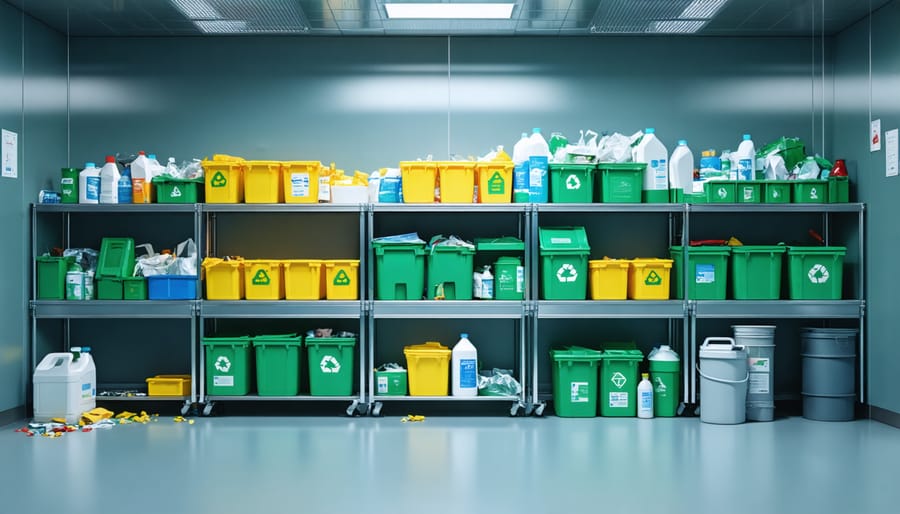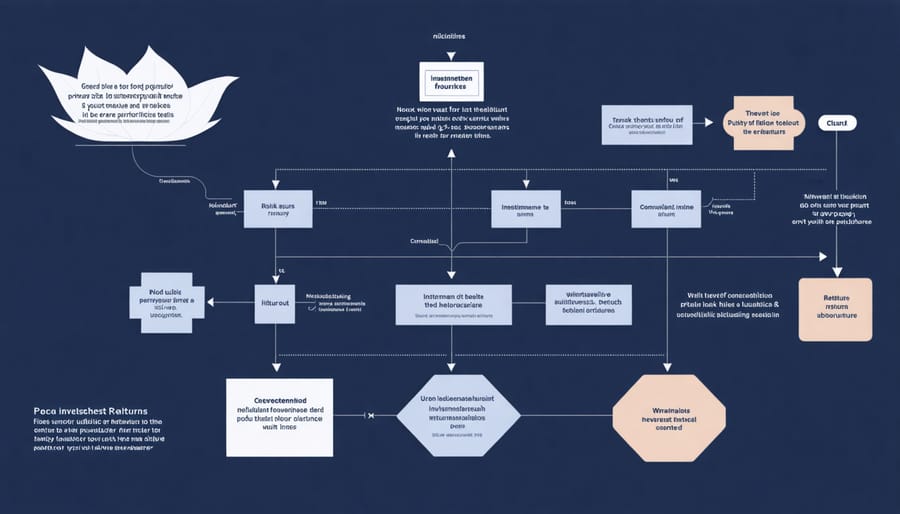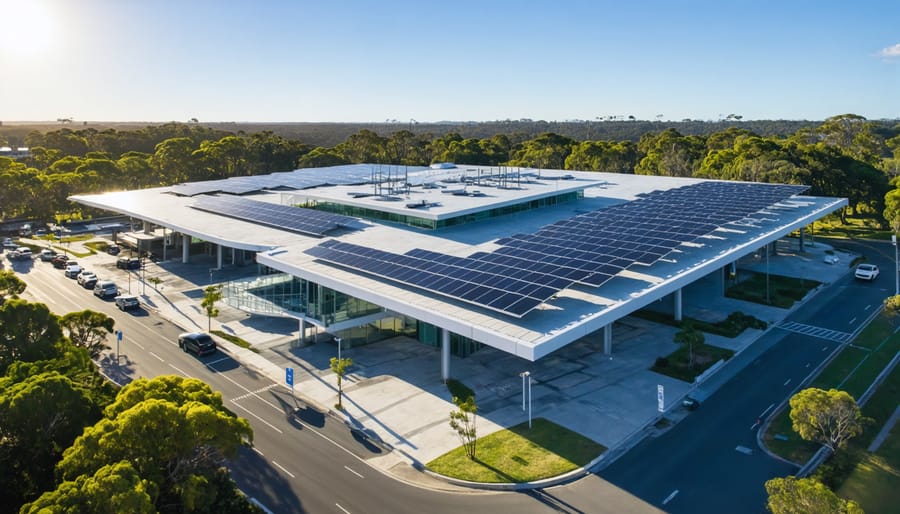Healthcare public-private partnerships (PPPs) revolutionize modern medical infrastructure delivery, combining government oversight with private sector efficiency to create sustainable healthcare infrastructure that serves communities better. These strategic alliances have transformed Australia’s healthcare landscape, delivering state-of-the-art facilities while optimizing public resources and improving patient outcomes.
In an era where healthcare demands continue to surge, PPPs offer a proven solution to bridge the infrastructure gap, reduce operational costs, and accelerate medical innovation. From Melbourne’s Royal Children’s Hospital to the Northern Beaches Hospital in Sydney, these partnerships demonstrate how shared expertise and risk management create centers of excellence that benefit both patients and healthcare providers.
The success of healthcare PPPs lies in their ability to leverage private sector efficiency while maintaining public sector accountability. This collaborative approach enables faster project delivery, introduces cutting-edge medical technologies, and ensures long-term operational sustainability – all while maintaining the public healthcare system’s core mission of providing accessible, high-quality care to all Australians.
As healthcare systems worldwide face mounting pressures, the Australian experience shows that well-structured PPPs can deliver world-class medical facilities while ensuring fiscal responsibility and service excellence.
The Critical Role of Healthcare PPPs in Clean Tech Innovation

Energy Efficiency in Medical Facilities
The partnership between public healthcare facilities and private energy providers in Australia has yielded impressive results in sustainable operations. A standout example is the Royal Adelaide Hospital, which implemented a comprehensive energy efficiency program through a PPP model in 2019. The facility now operates with a hybrid energy system combining solar power and bioenergy, reducing its carbon footprint by 35% while maintaining critical healthcare operations.
In Western Australia, the Fiona Stanley Hospital showcases how PPP arrangements can drive innovation in medical facility energy management. The hospital’s partnership with a private energy services company led to the installation of smart building systems, LED lighting, and waste-to-energy solutions. These initiatives not only cut energy costs by 40% but also created a more comfortable environment for patients and staff.
The Sunshine Coast University Hospital demonstrates the scalability of PPP energy projects. Through collaboration with local renewable energy providers, the hospital implemented a trigeneration plant that simultaneously produces electricity, heating, and cooling. This system, combined with solar panels and energy-efficient building design, helps the facility meet 60% of its energy needs through sustainable sources.
Regional facilities are also embracing clean technology through PPPs. The Bendigo Hospital partnership pioneered a modular approach to energy efficiency, allowing for staged implementation of renewable solutions while minimizing disruption to hospital operations. Their success has created a blueprint for other regional healthcare facilities looking to reduce their environmental impact while managing costs effectively.
These examples show how PPPs enable healthcare facilities to overcome initial capital constraints and access technical expertise, resulting in more sustainable and cost-effective operations.
Waste Management Solutions
Healthcare PPPs are revolutionizing medical waste management through innovative and sustainable practices that benefit both the environment and healthcare facilities. These partnerships are proving instrumental in developing comprehensive waste reduction strategies while maintaining strict compliance with healthcare regulations.
Leading Australian hospitals have demonstrated remarkable success through PPP initiatives that combine private sector expertise with public sector oversight. For instance, the Royal Adelaide Hospital’s waste management program, implemented through a PPP model, has achieved a 40% reduction in clinical waste through improved segregation practices and staff training programs.
These partnerships are introducing cutting-edge technologies such as automated waste sorting systems and advanced sterilization methods that minimize environmental impact. Private partners bring specialized knowledge and resources, while public institutions ensure adherence to safety standards and community interests.
Notable innovations include the implementation of reusable sharps containers, which have significantly reduced plastic waste, and the introduction of waste-to-energy facilities specifically designed for healthcare waste. These initiatives not only reduce landfill burden but also generate clean energy for hospital operations.
Staff engagement has been crucial to success, with PPPs facilitating comprehensive training programs and creating user-friendly waste segregation systems. The result is improved compliance rates and reduced contamination of recyclable materials.
Looking ahead, these partnerships are exploring blockchain technology for waste tracking and investigating opportunities for circular economy principles in healthcare waste management. By combining public oversight with private sector innovation, healthcare PPPs are setting new benchmarks for sustainable waste management practices in the medical sector.


Financial Models That Work
Risk-Sharing Frameworks
In successful healthcare public-private partnerships, effective risk-sharing frameworks are crucial components of healthcare funding structures. These frameworks typically distribute financial, operational, and clinical risks between public and private partners based on each party’s expertise and capacity to manage specific challenges.
Private partners often assume construction and operational risks, including facility maintenance, equipment updates, and service delivery standards. They’re typically responsible for meeting predetermined performance metrics and may face financial penalties for falling short of these targets. Meanwhile, public partners generally retain risks related to policy changes, public health emergencies, and broader healthcare system integration.
Many Australian PPP models incorporate risk-sharing mechanisms such as volume guarantees, where the public sector ensures minimum patient numbers, and payment mechanisms that balance fixed availability payments with variable performance-based components. This approach ensures private partners maintain service quality while protecting public interests.
Insurance requirements, performance bonds, and step-in rights provide additional safety nets, allowing public authorities to intervene if private partners fail to meet obligations. Success lies in creating transparent, fair arrangements that align incentives while maintaining focus on quality healthcare delivery.
Return on Investment Metrics
Healthcare PPPs focused on clean technology initiatives are delivering impressive returns across multiple metrics. Financial returns typically range from 15-25% over five years, with solar-powered hospitals showing particularly strong performance through reduced operational costs. The Royal Adelaide Hospital’s renewable energy integration, for instance, has cut energy expenses by 40% since implementation, while creating long-term value for both public and private stakeholders.
Environmental returns are equally compelling, with clean tech PPPs significantly reducing healthcare facilities’ carbon footprints. Modern healthcare PPPs are achieving carbon emission reductions of 30-50% compared to traditional facilities. The Western Sydney Health Precinct demonstrates this dual benefit, having prevented 12,000 tonnes of CO2 emissions annually while generating $3.5 million in energy savings during its first two years of operation.
Beyond direct financial and environmental metrics, these partnerships create additional value through improved community health outcomes, enhanced facility resilience during extreme weather events, and increased public trust. The ripple effect extends to job creation in the renewable energy sector and the development of innovative healthcare solutions that benefit both urban and regional communities.
Success Stories from Australian Healthcare
Australia’s journey in healthcare innovation in Australia has produced remarkable success stories in public-private partnerships, particularly in implementing clean technology solutions. The Royal Adelaide Hospital stands as a shining example, becoming Australia’s first large-scale hospital to achieve a 4-Star Green Star rating. Through a innovative PPP model, the facility implemented solar panels, smart building management systems, and water recycling initiatives, reducing energy consumption by 45% compared to conventional hospitals.
In Victoria, the Bendigo Hospital Project demonstrates how PPPs can transform regional healthcare delivery while prioritising sustainability. The partnership between the state government and Exemplar Health consortium resulted in a facility powered by 100% renewable energy, featuring a therapeutic rooftop garden that both improves patient wellbeing and reduces the building’s carbon footprint.
The Northern Beaches Hospital in Sydney showcases how private sector expertise can accelerate sustainable healthcare solutions. Through collaboration with Healthscope, the facility incorporated state-of-the-art waste management systems and energy-efficient design elements, achieving a 30% reduction in water usage and significant decreases in operational costs.
These partnerships have also sparked innovations in smaller-scale projects. The Sunshine Coast University Hospital’s micro-grid initiative, developed through a PPP with local energy providers, now generates 20% of its power needs through onsite renewable sources. This success has inspired similar projects across regional healthcare facilities.
The key to these achievements lies in carefully structured agreements that align public health objectives with private sector efficiency and environmental goals. By sharing risks and responsibilities, these partnerships have not only improved healthcare delivery but also set new benchmarks for sustainable hospital design and operation in Australia.
Healthcare public-private partnerships represent a powerful catalyst for accelerating clean technology adoption across Australia’s medical sector. By combining government oversight with private sector innovation and resources, these partnerships have demonstrated their ability to drive sustainable healthcare solutions while maintaining high-quality patient care. Moving forward, success depends on establishing clear governance frameworks, setting measurable sustainability targets, and fostering transparent communication between all stakeholders. To maximize impact, healthcare facilities should prioritize partnerships that focus on energy-efficient infrastructure, renewable power systems, and waste reduction technologies. The future of healthcare PPPs lies in creating scalable models that can be replicated across different regions, ultimately contributing to a more sustainable and resilient healthcare system for all Australians.

